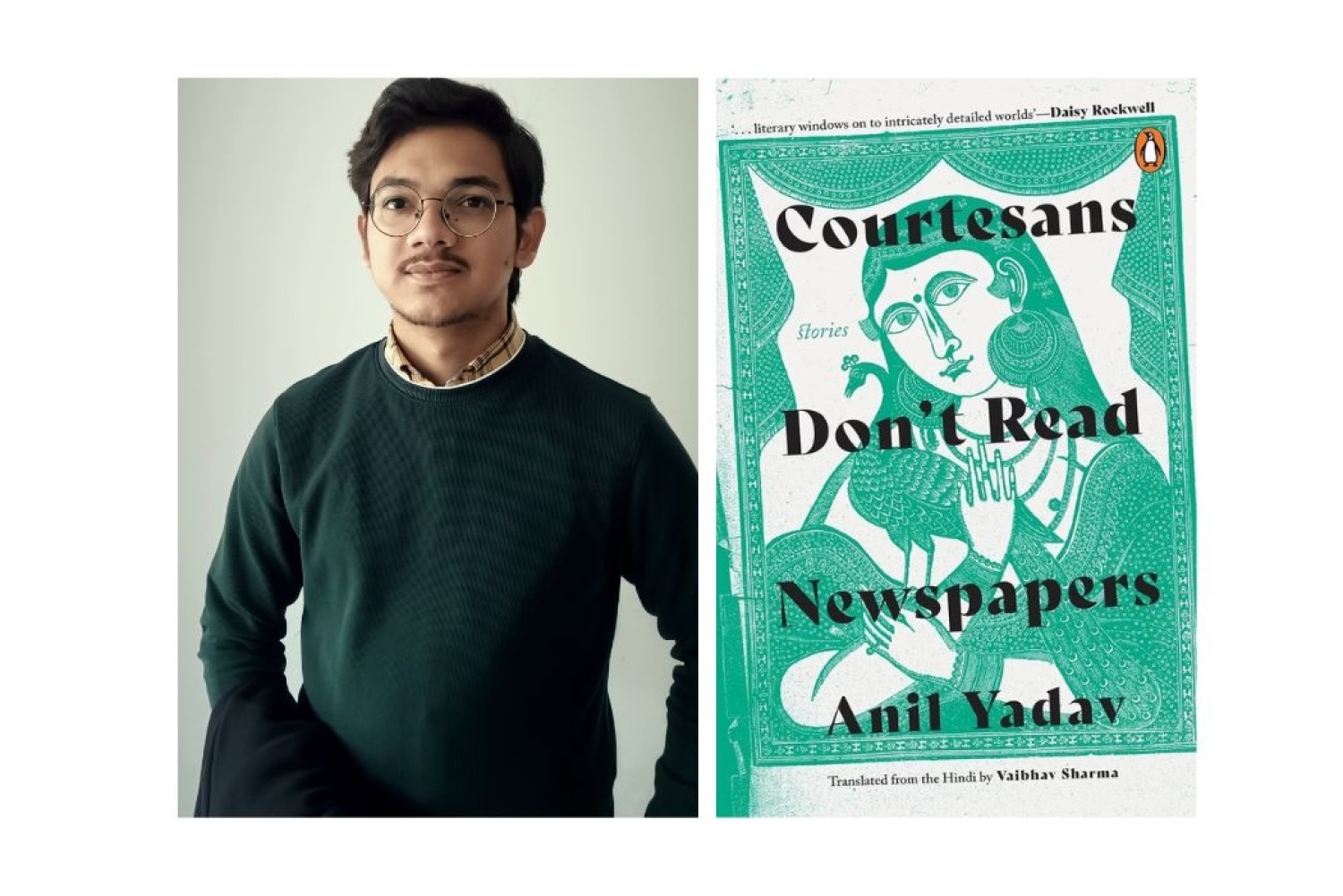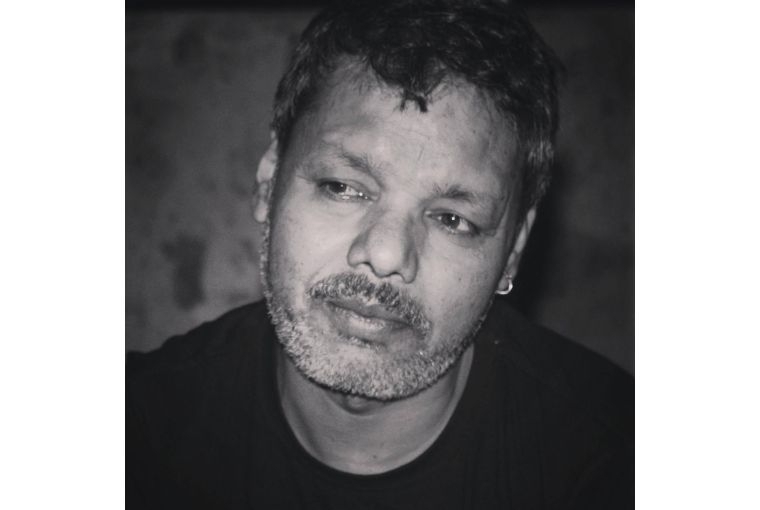
L: Translator, Vaibhav Sharma

L: Translator, Vaibhav Sharma
In Courtesans Don’t Read Newspapers, Anil Yadav builds windows into worlds that are seemingly different from our own, but also all the same. This collection forces one to question ideas of privilege, power, and poverty, and this questioning is what runs through as a common theme between these stories. The opening story conjures up a puzzling world, where a reporter faces the moral dilemma of reporting on a conspiracy that threatens the very existence of a colony of prostitutes. Although the opening story is the longest, and most detailed, the following five stories are a joy to read as well.
Intrigued by the ways in which Anil Yadav’s stories bring marginalized lives and hidden struggles into sharp focus, we asked him what draws him to this lens, he says simply, “The compassion.” Politics, power, and morality play a deep role in his stories, and he hopes readers take away the complexity of life. On his choice of short stories as a mode of storytelling, he says he writes fiction for pleasure and for a deeper understanding of life. Speaking about literary influences, he says there were many, including the Mahabharata. As for what lies ahead, he shares that he is working on two novels and that the future remains as mysterious as ever.

Author, Anil Yadav
The sensitivity and importance placed on language in this collection is visible through all the stories—we were also lucky to speak to Vaibhav Sharma, the translator, on his process, relationship with language, and what drew him to this collection.
What is your relationship with Hindi and English?
As one might expect it is complicated. One language is my mother tongue whereas the other comes with colonial baggage. And though my personal relationship with the two languages affects my approach to translation, it can’t hinder the quality of the final product. In the end, the book needs to work in the target language.
How did you go about translating local rhythms, voices, and contexts that might not necessarily have an English equivalent?
Finding an exact equivalent is not always the goal. The focus is on getting the core ideas across. With respect to the stories in this collection, I had to try multiple approaches, as there’s no rule that can apply to everything. Sometimes you go for the synonyms which rhyme, and sometimes you replace the Hindi names of things with their English language equivalents. At times you also need to create your own imagery to convey the ideas that the writer was trying to convey in the original.
What drew you to this collection and made you want to share it with a wider audience?
At first it was the cover and the synopsis that drew me to the book, and then it was the writing that really made the decision for me. These stories, despite being written more than a decade ago, still echo the realities of present-day India. Anil Yadav’s writing is both engrossing and yet detached at the same time. He has the edge of a journalist but also the empathy of a humanitarian, which I believe is the sign of a brilliant writer. It was a no-brainer that I had to translate this book. This was a challenging undertaking, and I love a good challenge.
What is your translation process?
I read the book cover to cover first. I usually sit with a pencil, scribbling my ideas, questions and any other remarks in the margins. Then I start the first draft; I just type line by line till the first draft is done. That draft is then edited till I get as close to the desired results as possible. I turn in my manuscript in one of the two cases: either I am on a tight deadline, or I have exhausted all the possible ways I can tweak the sentences. Mostly it’s the former, because I never really feel like I am done, and I need someone to make me stop.
What are you working on now, what’s the future looking like?
I’m currently working on Manav Kaul’s travelogue, Bahut Door Kitna Door Hota Hai, to be published by Penguin India somewhere in the first quarter of 2026. I have other projects lined up as well, a novel by Vandana Rag, which I am co-translating with Shivangi Pandey. I’m also translating a curated selection of short stories by Pratyaksha. No publishers are attached to the latter two projects so far.
Words Neeraja Srinivasan
Date 13-10-2025